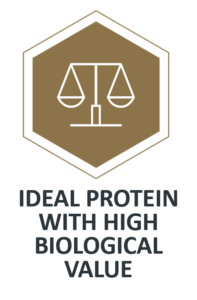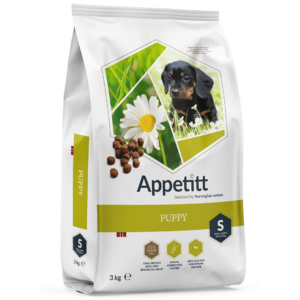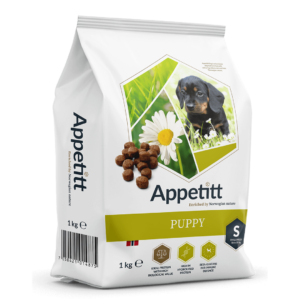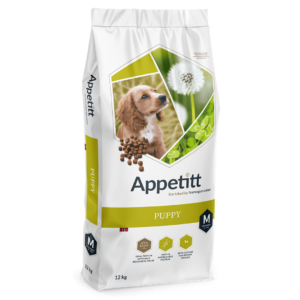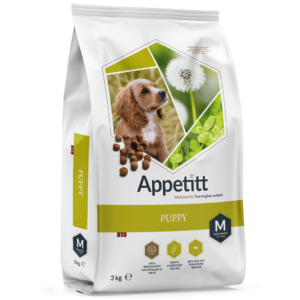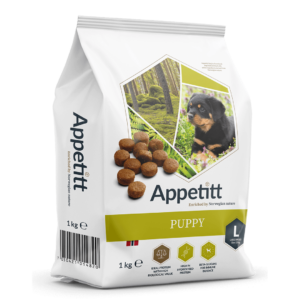Puppies grow quickly and it is important to ensure proper nutrition, especially in the dog’s first year of life. Puppies have a very specific nutritional need because the immune system, digestive system, muscles and skeleton develop rapidly during the 1- 1/5 year of age.
A complete diet adapted to the dog’s age and breed is therefore important for healthy and good development.
Different breeds have different needs throughout their developmental stages, so check with breeders, veterinarians as well as other experts to ensure that you are giving your puppy a food adapted to you puppy’s need.
How often should the puppy have food?
The amount of food for each meal is very individual, but use the recommended feeding guidelines found on the bag as a start, and regularly check the puppy’s body condition score. How often the puppy should have food depends on the puppy’s age, and a rule is that up to six months of age, the puppy should have the daily ration of feed divided into at least 3 feedings. When the puppy is six months old, you can go down to 2 feedings per day.
The puppy period lasts until the puppy is 10 – 16/18 months old, depending on the breed. A general recommendation can be seen from the table below.
Puppy | Adult weight | From weaning til adult dog |
|---|---|---|
Small breeds | < 15 kg | 4 – 6 weeks to 8 – 12 months |
Medium and large breeds | > 15 kg | 4 – 6 weeks to 12 – 24 months |
The puppy’s growth period goes through different phases
When the puppy are about 3-4 weeks old, you can start carefully to introduce dry food. Normally, the puppies will seek the same food bowl as their mother uses, and start eating there. For the puppies, it is therefore an advantage that the bitch gets the same feed as the puppies.
After weaning, we call the period for the growth period. This lasts until the puppy is 10–24 months old, depending on the breed. Small breeds can reach adult weight already at 8 – 10 months of age, while large breeds up to 24 months of age.
Optimum growth is when the puppy utilizes its genetic potential, at the same time as the bones and skeleton develop normally.

